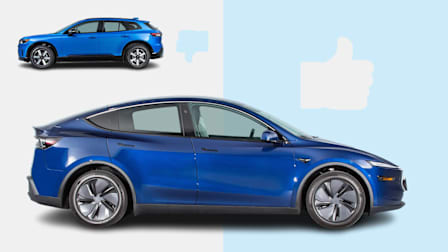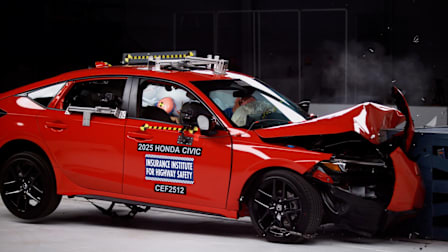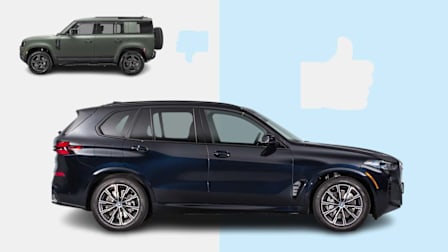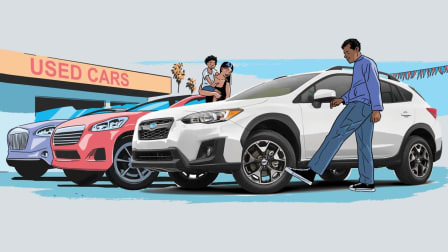IIHS Crash Tests Show Which Luxury SUVs Protect Rear Passengers
Models from Volvo, Lincoln, and Mercedes-Benz outperformed competitors
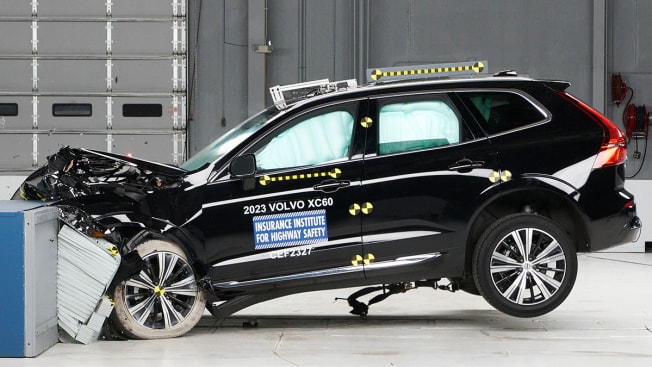
New crash test results from the Insurance Institute for Highway Safety (IIHS) show that three midsized luxury SUVs—the Lincoln Aviator, Mercedes-Benz GLE, and Volvo XC60—offer good protection for front and rear seat occupants. However, several competing models lag behind.
The vehicles were tested as part of the IIHS’ updated “moderate overlap” frontal test, which mimics crashes in which two vehicles driving in opposite directions hit each other at 40 mph, but not head-on—as if one car drifted across the center line of a roadway.
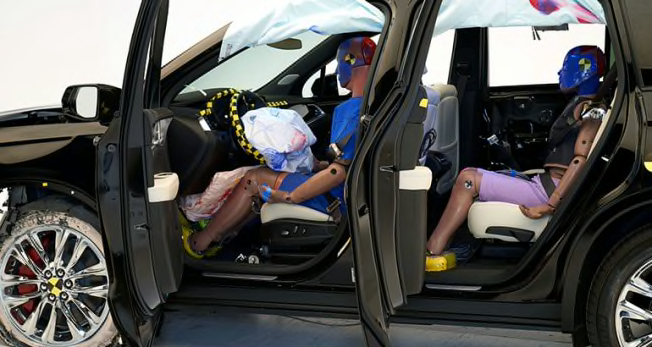
Photo: IIHS Photo: IIHS
Submarining—when a person slides below the lap belt in a crash—was a problem for many of the vehicles, including the MDX, RX, Q5, and XT6. Dummy measurements from the Cadillac also indicated a moderate risk of head or neck injuries and a high risk of chest injuries.
“Submarining occurs when the seat belt does not properly engage the hip bones, which can result in the pelvis sliding under the lap belt, exposing the soft tissue of the abdomen to belt forces,” says Emily Thomas, PhD, manager of auto safety at Consumer Reports’ test center.
Automakers can remedy this issue by improving how seat belts fit on passengers, improving the implementation of advanced seat belt features, and updating vehicle seat designs.
As with all crash tests, newer versions of these vehicles are likely to score higher in future crash tests as automakers redesign their vehicles to achieve top ratings.
“It’s encouraging to see improvements in IIHS’ rigorous crash tests. However, those improvements should not be limited to luxury models. Mainstream manufacturers need to step up and improve rear occupant protection. Thanks to this testing, we can have a reasonable expectation to see that shift soon,” says Thomas.
CR also evaluates rear-seat safety features as part of our ratings program. These include child car seat and booster seat fit, crash-protection features intended for rear occupants of all ages and sizes, and technology designed to encourage rear seat belt use and prevent kids from dying in hot cars. Regardless of how a car scores in these tests, the rear seat is still the safest place for children under 13.

















